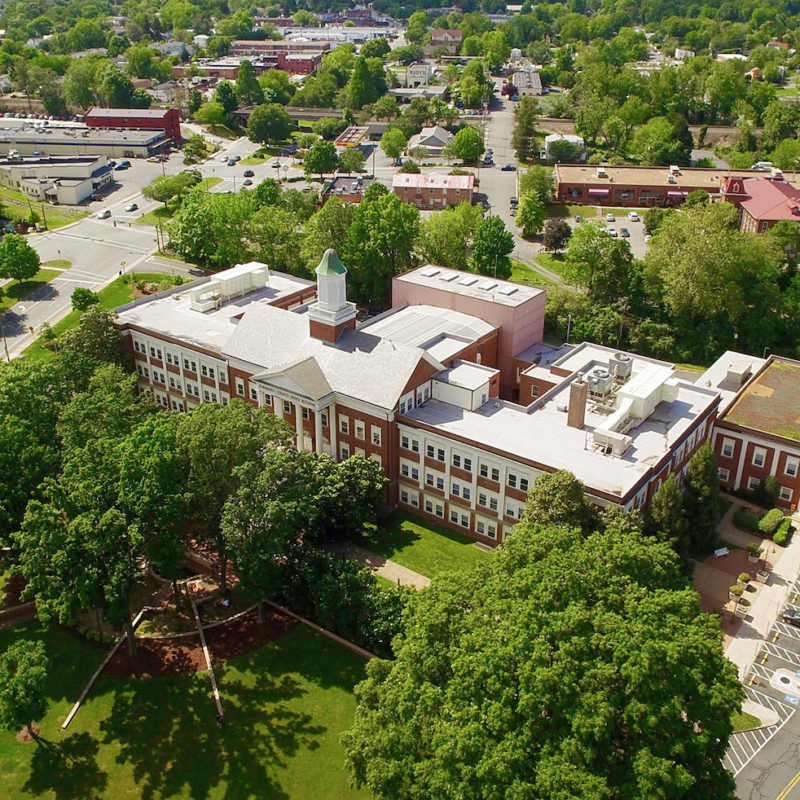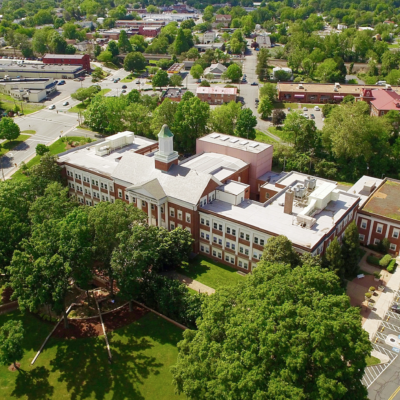“Personal” is a word often applied to Sally Mann’s photographs (along with others—“intimate,” “startling,” and sometimes that chestnut of wary critics, “disturbing”). And “personal” also describes the atmosphere of Steven Cantor’s documentary about Mann, What Remains, which along with her work will be part of the Festival of the Photograph June 7-9. [see c-ville.com highlight and photo gallery] Her husband and children, her dead and living dogs, her house and parents and tears—all are here, along with the painstaking processes behind her work. As it’s all under the umbrella of the personal, everything, including the film itself, seems to blend.

Shiva at Whistle Creek, 1992
|
The short history of Mann’s career is this: Impossibly strange and lovely photos of her three children brought her fame in the early ‘90s, after which she turned to moody Southern landscapes and then to a series about death and decay (also called “What Remains”). The longer history would have to include chapters about her hesitant relationship to her own notoriety, and the squeamishness with which some viewers have regarded what she calls her “family pictures.” That discussion has often started with the fact that the children are sometimes nude in the pictures, but at bottom it is a reaction to how fully the photos reveal the eerie and utterly uncute—though often beautiful—reality of childhood.

#1 Scarred Tree, 1998
|
In the larger world, Mann is a respected artist with a long list of major grants and shows to her credit. In Cantor’s film, she is a real woman whose charm is equal parts erudite and earthy. We see her riding horses, cutting her husband’s hair at their house near Lexington and giving painstaking direction to her now-grown daughter, still modeling for her mother’s camera: to look “sweet, pacific, benign, serene and just a little mysterious.” The way Mann’s life plays out so plainly in the film, she says, was partly a result of her own approach to being on the less-familiar side of the camera.
“I said, ‘Look Steve, I’m going to do something I almost never see in films: be completely open,” she says. “When the film crew arrives I’m not going to put on nice clothes, brush my hair, clean the house—I’m not going to change anything about my life.” Nor did she shy from confronting, on camera, the reality of death as it informed the scope of her “What Remains” series. One riveting scene has her examining the leg of a beloved family dog, decayed to bone with a few remaining fragments of flesh. Later, equally unflappable, she visits a research facility where human bodies are left to decompose outdoors and where she eventually made a number of photos. Stepping gingerly among bodies in various stages of disintegration—a fairly horrific setting by any measure—she points out a shade of red streaking one corpse’s decayed leg.

Jessie Bites, 1985
|
This is Cantor’s second film about Mann; the first, 1994’s Blood Ties, began as part of a documentary about censorship but took on a life of its own. “[Cantor] showed up with this ragtag crowd of young kids,” she remembers. “A half-day shoot ended up taking four days because they weren’t sure if they were getting anything.” Back in New York, Cantor decided he had gotten enough to make an entire film—one that ended up a winner at Sundance and a nominee at the Oscars. “Both of us were a little bemused,” Mann says. “It was a very jejune effort.” What Remains was, in part, Cantor’s effort to redo that youthful project.
Thus, in the newer film, there is a curious balance between Mann’s deliberately unvarnished affect and the sense that she is actually a seasoned film subject. What’s more, Cantor’s film makes plain that, even to a woman who seems supremely self-assured, recognition for her art is still important. She appears at her most vulnerable when a prominent New York gallery cancels a show of her work—a crisis that provided Cantor with a high point for the narrative arc he was trying to trace through 400 hours of film shot over a five-year period. “When you make a film you want to have a narrative, a beginning, middle, and end; you want to know that it has some kind of narrative tension,” she says. When the show was cancelled, “I called him and said, ‘You’re not going to believe what just happened.’ He said, ‘Don’t stop crying! I’ll be there in seven hours.’ Until that point he was sweating bullets.”
Aside from being a sumptuous film about an artist’s relationship to the bucolic landscape into which she was born, What Remains is also a study in layers of looking. Viewers might be familiar with Mann’s children as naked waifs immersed in a humid landscape; here they are as young adults, and they seem a little more affected by Cantor’s presence than their mother, as though they were acting out their own family life. Perhaps this is proof of what Mann says in the film—that her photos of Jessie, Emmett and Virginia were made with their conscious collaboration, that the work is “their work.”

Virginia Triptych (a detail 1 of 3)
|
Or perhaps it is the kind of work that surprises even the person whose name it bears. Asked what she sees now when she looks at the famous pictures of her children, known by the title of the book Immediate Family, Mann says they behave quite differently than standard family photos. “We have these albums of pictures, the everyday snapshot pictures that are just so precious,” she says. “When I look at [Immediate Family], I don’t have that same wrenching feeling of poignancy and loss and yearning that I do when I look at snapshots. I think they transcend time, and they transcend the subject.”
Mann’s show at Second Street Gallery will include parts of the “What Remains” series as well as new work: studio still lifes made with the 19th-century ambrotype process. “You’re confronted with a tabletop and a ball,” she says; “how to make that interesting has been a real challenge for me.” In three years, she’s made 15 still lifes. “You get one good one,” she says, “and you say, ‘This is easy.’ By the 10th you realize it’s really hard to do.”
 |
Sally Mann’s work will be on view at Second Street Gallery through August 18 as part of the Festival of the Photograph; Cantor’s film will screen at Vinegar Hill Theatre on June 9 at 1pm, and a live interview with Mann will take place at The Paramount Theater at 4pm on June 8. More work, including images from Mann’s family series, will also be on view through August 5 at the University of Virginia Art Museum.





